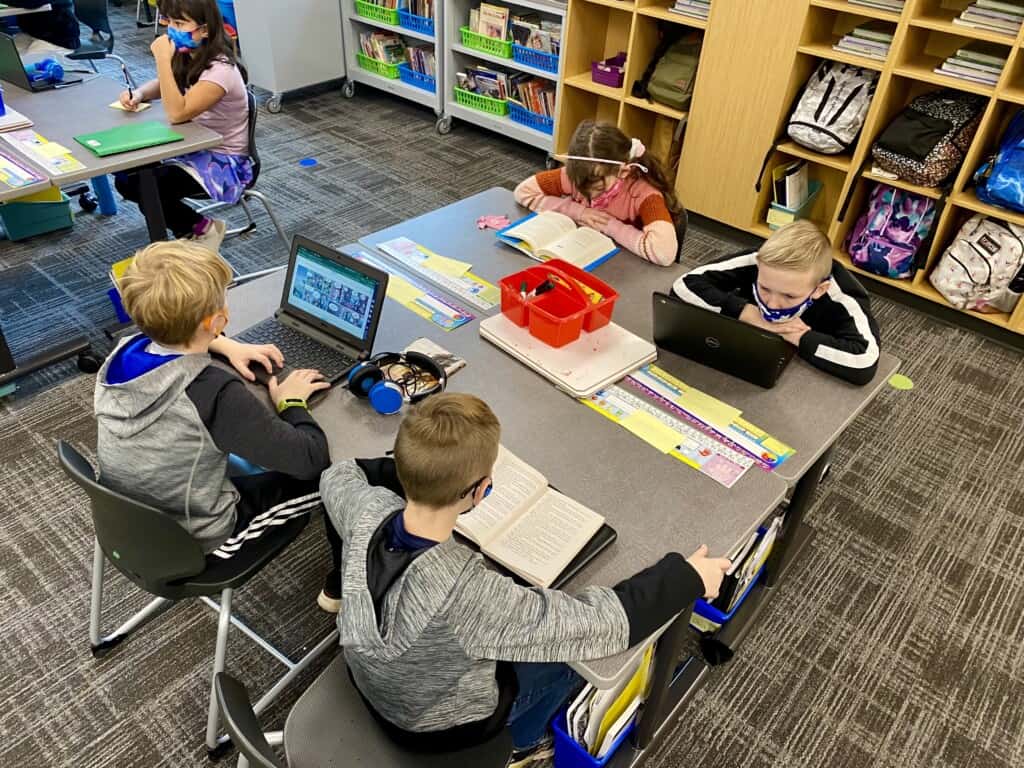Education
Peninsula students not flocking back to school as expected
Last year, as public schools rode out turbulence from the coronavirus pandemic, Peninsula School District’s enrollment dropped by 843 students from its previous annual average. The number who have returned this school year falls significantly short of what was predicted.
Education Sponsor
Education stories are made possible in part by Tacoma Community College, a proud sponsor of Gig Harbor Now.
District officials are closely watching the budget, given that each full-time student represents an allocation from the state of $9,616 for basic education. Students in the online learning program, who make up on average about 2.2% of total enrollment, have a slightly lower per student allocation ($8,726).

School district officials expected a larger number of the 843 students who left last year because of the coronavirus pandemic would return this year. Christina T Henry / Gig Harbor Now
Early in 2021 at the start of budget preparations for the 2021-22 school year, the district “optimistically” projected it would regain about 60% of students who’d left, knowing school buildings would again be open five days a week, said CFO Karen Andersen.
By early summer, as the delta variant gained traction, the finance office walked back that prediction and did so again later in the summer as student registrations came in more slowly than what was hoped for or expected.
By the end of November, Peninsula’s average enrollment was 8,602, just 206 more students than at the same time the previous year. The trend was concerning.
“We believe we will continue to see additional students coming back throughout this year, all dependent on current COVID conditions,” Anderson said. “Although our enrollment is coming in under projections, we are currently analyzing the budget and monitoring expenditures to anticipated revenues based on actual enrollment numbers.”
No programs or services have been cut or trimmed, Anderson said, but if lower enrollment persists, it could have fiscal impacts this school year and into the next.
“As we move into the new calendar year, we will start working on next year’s budget,” Anderson said. “Depending on what anticipated financial impacts we have for this fiscal year, may affect decisions made for next year’s budget.”
Where have the students gone?
District finance officials were not immediately able to tally the number of students who have left for homeschool, private school or online schooling. But they have tracked a couple of trends.
The pandemic shuttered school buildings in March 2020 for the remainder of the 2019-20 school year. From June 2020 to December 2020, as schools gradually reopened in hybrid mode, Peninsula reported more students transferring out to either private school or homeschool than to online school.

District officials don’t know whether students have left for homeschool, private school or online schooling. Christina T Henry / Gig Harbor Now
“Exit codes” lump those who leave a school district for homeschool or private school into one category. So, data on those two groups can’t be teased out.
This fall, the trend was more toward online school. From June 2021 to the present, with schools resuming a five-day-per-week in-person schedule, the district reported more students transferring “within the state.” That exit code would include those transferring to a Washington public online institution that might be within Peninsula School District or not.
Peninsula decided this summer to keep online learning an option for all students in the new school year given some families might be reluctant to send their kids back to the classroom. And for some students, online learning proved easier.
Peninsula expanded its “alternative learning experience,” previously available only to grades 9-12, to grades K-8, rebranding it the Global Virtual Academy. The number of students in that program is up slightly this year, reflecting its availability to younger students, but there hasn’t been a mass migration to online learning, according to Anderson. The vast majority of students remain enrolled in basic education.
Enrollment in Running Start, where high school students complete their degree while earning college credits, is coming in lower than expected, Anderson said. Currently, 380 students are enrolled in that program compared to a projected 450 on average.
COVID recovery funds fill some gaps
Peninsula, like other school districts, has weathered the loss of enrollment and other pandemic impacts with state and federal COVID relief money.
The state in 2020-21 provided Peninsula schools more than $8 million in “enrollment stabilization” funding. That’s money the state had available because of lower enrollment during the pandemic. Peninsula officials are hoping the Legislature will pull through with more stabilization money, which comes with “no strings attached” and can be used like any other general fund revenue, Anderson said. Peninsula last year also received nearly $1.5 million in “transportation stabilization” funding.
Federal recovery funds, doled out through the state, have also helped fill budget gaps. Peninsula in 2020-21 received $628,658 through the federal CARES Act.
Some of the state’s stabilization funding, along with federal recovery funds released to the district in April thru July 2020, was carried forward into this year’s budget. And more federal funds have become available with subsequent coronavirus recovery bills.
Billions for schools as pandemic drags on
In March 2020, the Coronavirus Aid Relief and Economic Security (CARES) Act allotted $30.75 billion for schools in what was called the Education Stabilization Fund (different from the state’s stabilization funding). Within that fund, $13.2 billion was designated for the Elementary and Secondary School Emergency Relief Fund (ESSER), money that each state could decide how to distribute.
The Coronavirus Response and Relief Supplemental Appropriations Act, signed into law Dec. 27, 2020, provided an additional $54.3 billion for the ESSER Fund. The American Rescue Plan, signed into law March 11, 2021, included $122 billion for the ESSER Fund.
Peninsula’s 2021-22 budget includes $1,139,315 in Phase II ESSER funding and $2,519,865 in Phase III ESSER funding (with phases tied to allocations in the second and third coronavirus relief acts).
Aid with strings attached
In Washington State, the ESSER formula has allotted money based on the number of low-income students in a district. Peninsula School District, with nearly 80 percent of students classified as “non-low-income,” received an allotment that was proportionally lower than less affluent school districts around the state.
The district expects to use all of its ESSER funding, Anderson said, but it must spend it up front, then claim it, and there are regulations on what is an allowable expense. So far, ESSER money has been used for pandemic-related expenses, like Internet hot spots to aid remote learning and PPE not covered through other sources. The district is being careful to charge only what’s allowed to meet federal guidelines and pass any audit reviews to come.
For Peninsula, additional enrollment stabilization from the state would be a more significant source of help, Anderson said.
In other revenue aid, the Legislature gave school districts leeway this year in local levy collection formulas to offset decreased enrollment.
Peninsula School District’s budget approved in August projects $142,671,753 in revenue compared to $149,356,633 in expenditures. The shortfall will be made up if needed by drawing down the district’s reserve fund balance (savings) to an estimated $8,854,532.

